 Plasma cutting is a highly effective metal fabrication process that uses an electrically conductive gas to transfer energy from a power supply to any conductive material. While this technology offers precision and speed, it also generates significant amounts of fine particulates, metallic fumes, and hazardous dust that pose serious challenges for high-volume operations. Effective plasma cutting dust collection systems are essential for protecting workers, maintaining compliance, and ensuring optimal facility performance.
Plasma cutting is a highly effective metal fabrication process that uses an electrically conductive gas to transfer energy from a power supply to any conductive material. While this technology offers precision and speed, it also generates significant amounts of fine particulates, metallic fumes, and hazardous dust that pose serious challenges for high-volume operations. Effective plasma cutting dust collection systems are essential for protecting workers, maintaining compliance, and ensuring optimal facility performance.
In busy fabrication environments where multiple plasma tables operate continuously, the need for robust dust collection becomes even more critical. Learn more about our comprehensive plasma and laser cutting solutions designed specifically for demanding industrial applications.
Why Plasma Cutting Requires Specialized Dust Collection
The plasma cutting process creates a unique combination of airborne contaminants that demand specialized filtration approaches. Fine metallic particulates, hexavalent chromium, manganese fumes, and other metal dust particles are generated during cutting operations, particularly when working with stainless steel, aluminum, and coated materials. These contaminants pose significant respiratory health risks and can lead to serious occupational illnesses if not properly controlled. OSHA and NFPA regulations require employers to maintain safe exposure limits and implement engineering controls. Beyond worker safety, uncontrolled dust and fumes can damage sensitive equipment, reduce visibility, and create housekeeping challenges that impact overall operational efficiency.
Common Challenges in High-Volume Plasma Cutting Environments
High-volume plasma cutting operations face unique challenges that single-table setups rarely encounter. In a busy fabrication shop running multiple plasma tables simultaneously, fume generation can quickly overwhelm inadequate ventilation systems, leading to poor air quality and potential health violations. Space constraints often limit where dust collection equipment can be installed, requiring creative solutions that don't interfere with material handling or workflow.
In 24/7 production lines, system downtime for maintenance becomes costly, making reliability and easy filter access crucial considerations. In addition, varying material types and thicknesses throughout production runs create inconsistent particulate loads, demanding flexible systems that can adapt to changing conditions. Spark and slag management becomes more complex when multiple cutting stations operate simultaneously, requiring robust fire prevention measures and specialized filter protection systems.
FAQs Around Plasma Dust Collection Solutions
Is plasma dust hazardous?
Yes, plasma cutting dust contains potentially hazardous materials including hexavalent chromium, manganese, nickel, and other heavy metals. These particles can cause respiratory issues, skin irritation, and long-term health problems if exposure limits are exceeded.
What are common issues when plasma cutting?
Common issues include excessive fume buildup, poor visibility, respiratory irritation among workers, equipment contamination, and difficulty maintaining OSHA compliance. Inadequate dust collection often leads to increased maintenance costs and reduced productivity.
What are side effects of plasma cutting?
Without proper dust collection, workers may experience respiratory irritation, eye irritation, headaches, and potential long-term health effects from heavy metal exposure. Facilities may also experience equipment damage and cleanliness issues.
Is dust from plasma cutting safe to inhale?
No, plasma cutting fumes should never be inhaled directly. The process generates fine particulates and metallic fumes that can cause immediate respiratory irritation and long-term health problems. Proper ventilation and dust collection are essential.
Do you need a respirator for plasma cutting?
While engineering controls like dust collection systems are the preferred primary protection method, OSHA may require respiratory protection when exposure limits cannot be met through ventilation alone. The specific requirements depend on the materials being cut and the exposure assessment results.
Dust Collection Solutions and Considerations
Effective plasma cutting dust collection typically involves downdraft tables, source capture hoods, or booth-style enclosures paired with high-efficiency cartridge collectors. Key design factors include adequate airflow velocity to capture fumes at the source, appropriate filter media for fine particulate removal, and spark arrestor systems to prevent fire hazards. System sizing must account for the number of cutting stations, material types, and production schedules.
When comparing plasma operations to laser cutting applications, plasma generally requires higher airflow rates and more robust filtration due to the different cutting mechanisms involved. A quality laser dust collector may not provide sufficient performance for plasma applications without proper modifications and upgrades.
Designing for Efficiency, Safety, and Compliance
Proper dust collection system design serves multiple critical functions in plasma cutting operations. From a safety perspective, well-engineered systems maintain OSHA-compliant exposure levels while protecting workers from harmful particulates and improving overall air quality. Compliance benefits extend beyond worker safety to include fire prevention, environmental regulations, and insurance requirements.
Efficiency improvements include reduced equipment maintenance, better visibility for operators, cleaner facilities, and consistent production quality. Smart system design also considers future expansion needs, energy efficiency, and integration with existing facility infrastructure. The right approach balances initial investment with long-term operational savings while ensuring regulatory readiness for inspections and audits. Request a quote to explore how custom-designed systems can address your specific operational requirements.
Need Help Choosing the Right Plasma Dust Collection System?
Every plasma cutting operation presents unique challenges based on facility layout, production requirements, materials processed, and existing infrastructure. At A.C.T. Dust Collectors, we specialize in developing custom solutions that address your specific needs while optimizing performance and cost-effectiveness. Our experienced engineers can evaluate your current setup, recommend appropriate system configurations, and provide ongoing support to ensure optimal performance.
Whether you're upgrading an existing system or designing a new facility, we're here to help you achieve safer, cleaner, and more efficient operations. Get a custom system quote today and discover how our proven solutions can transform your plasma cutting environment.


























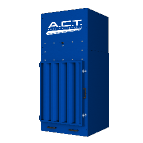
%20Collectors%20Image.png?width=143&height=143&name=ADC%20(Ambient)%20Collectors%20Image.png)
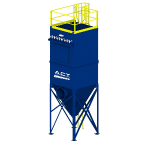

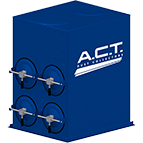
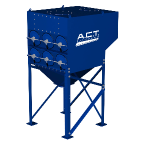
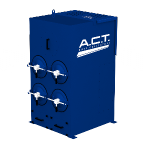


















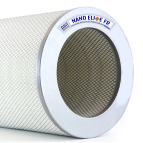


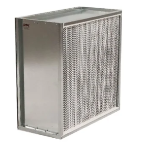

.png?width=240&height=91&name=ACT%20Dust%20Collectors%20Logo%20Solid%20White%202020%20(1).png)
.png?width=148&height=149&name=usa-manufactured-dust-collectors%20(1).png)